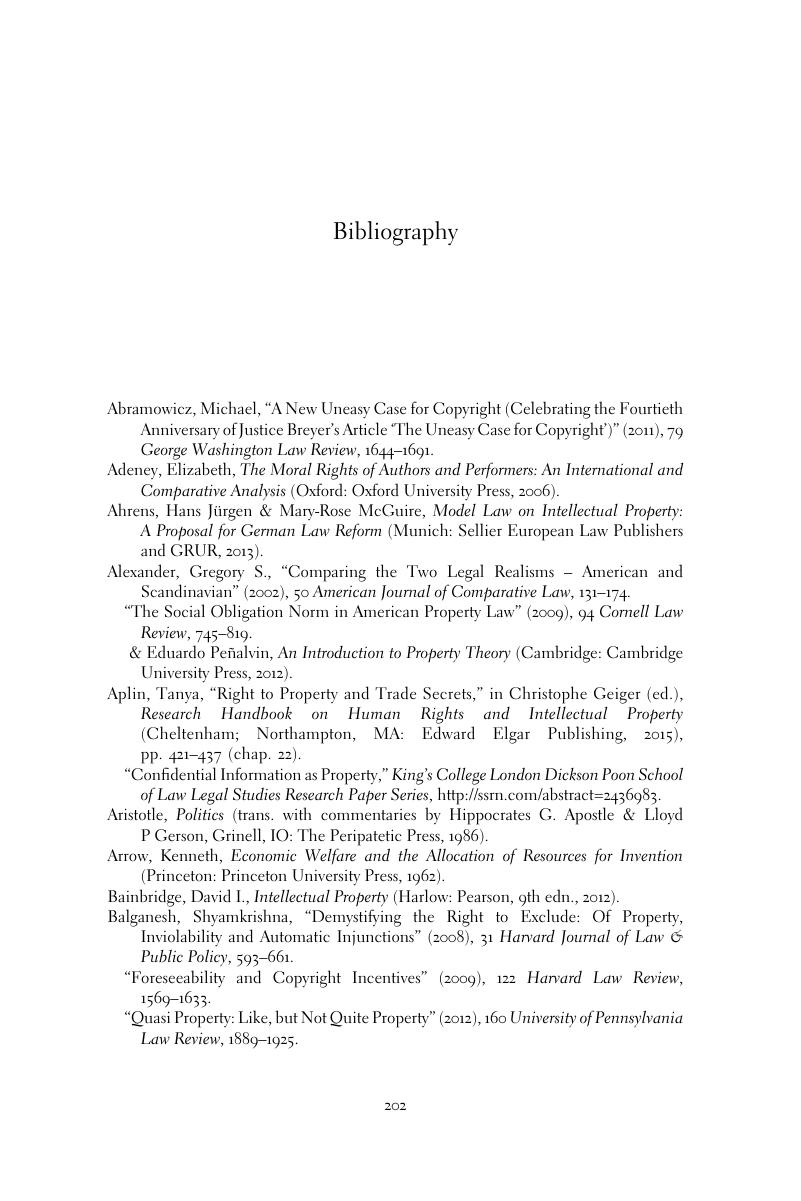Book contents
- Property Aspects of Intellectual Property
- Cambridge Intellectual Property and Information Law
- Property Aspects of Intellectual Property
- Copyright page
- Dedication
- Contents
- Preface
- Abbreviations
- Table of Cited Cases
- 1 Introduction
- Part I Three Property Aspects of IP Law
- Part II Implications of the Three Aspects of Property
- Bibliography
- Index
- References
Bibliography
Published online by Cambridge University Press: 19 June 2018
- Property Aspects of Intellectual Property
- Cambridge Intellectual Property and Information Law
- Property Aspects of Intellectual Property
- Copyright page
- Dedication
- Contents
- Preface
- Abbreviations
- Table of Cited Cases
- 1 Introduction
- Part I Three Property Aspects of IP Law
- Part II Implications of the Three Aspects of Property
- Bibliography
- Index
- References
Summary

- Type
- Chapter
- Information
- Property Aspects of Intellectual Property , pp. 202 - 218Publisher: Cambridge University PressPrint publication year: 2018

